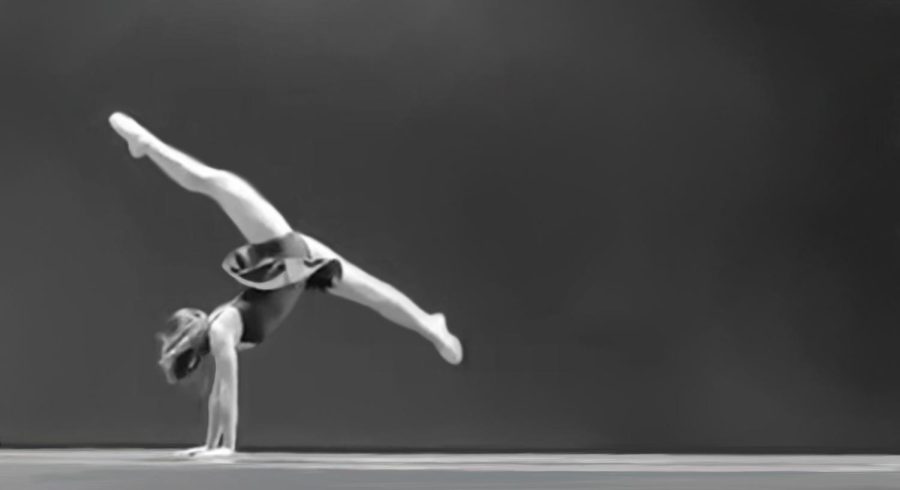Spiraling under the spotlight
Sophomore Ellie Ji holds a handstand at the Los Altos High School spring dance show. Although dance is one of Ellie’s passions, the sport places a toxic emphasis on appearance and body image.
Hairspray, makeup and sparkles below glaring spotlights. In dance, this is the dress code.. On stage, you’re scored for appearance; for this sport, your looks matter more than personality and skill.
If your cherry lips look chapped and bare, or your legs look pale and gray, you can kiss any appearance points goodbye. Your costumes, your face and your waist must all flatter you. Even when you are out of breath from the tiresome moves, an overwhelming, bright smile is still a must. Fake it until you make it, they say, but where’s the limit?
There’s an everlasting will to quit from forcing your limbs to bend and body to keep up with the unnatural skills of dance. Dance is the only sport where you’re watched from the tip of your toes to your final strand of hair — your athletic ability judged by any imperfection you host.
I remember piques and piques and piques to a forced arabesque with my teacher’s hand sharply guiding me against my skin tight leotard. She would say “tight core!” while jabbing into my ribcage and all I could think about was how the pudge against her hands felt.
I like dancing in my bedroom. To the music of my choice, and a solo where the stage is for myself to watch. I like the idea of not having an audience judge me for misplaced baby hair, low arches or shoulders too broad for a dancer.
In my room, there’s no mirror to watch or judges to judge me. There are no limitations for what to show with the rhythm of music of your choice. There’s no need to pique and pique and pique until you’re too dizzy to stick an arabesque or even to pique on beat, so you may simply dance to your heart’s content.
In competition, when you place in any category, it means your judges and coaches are telling you, “you can dance.” Parents will whisper, “that kid can dance.” Most kids don’t hear those compliments; instead they hear that their waist isn’t thin enough, or their skin is too dark for the neutral shade of flats or tights. They feel ashamed about their curly hair that doesn’t flatten perfectly into a bun or the natural way their knees turn in. There’s a narrow category that wins the appraisal to be deemed a worthy dancer.
Dance should be about opportunities for expression, but fake smiles, makeup and the physical stereotype of being a dancer make you stand out as not pretty, flexible or pale enough to be taken seriously.
In the dance world, I’m not a conventional dancer. I’ve faced colourism and fatphobia — simply adjectives that make me an imperfect fit for the aesthetics.
So is it worth the broken toenails to stay lifted on releve from your toes and to train until your leotard feels melted into skin for three minutes of the spotlight?




